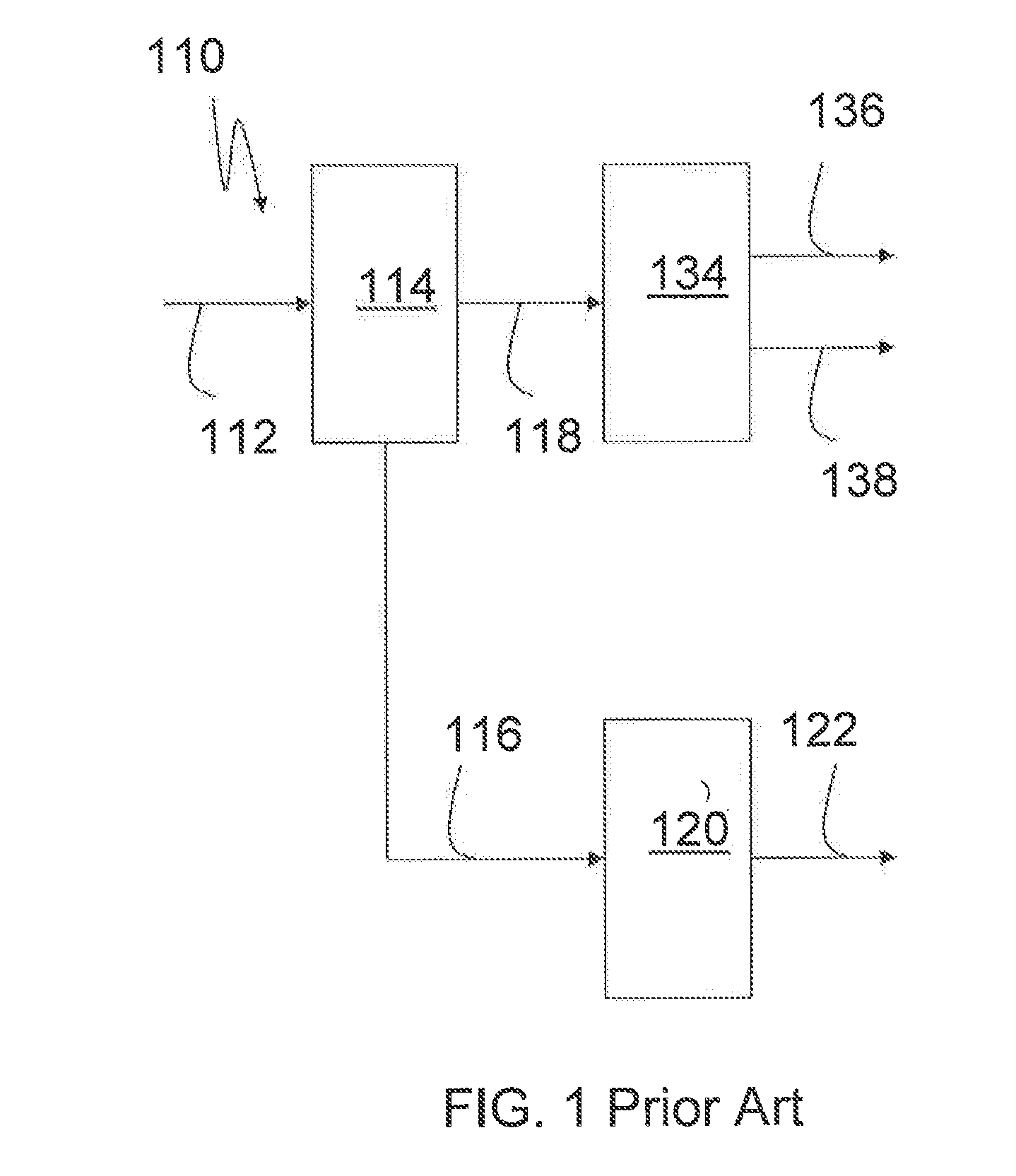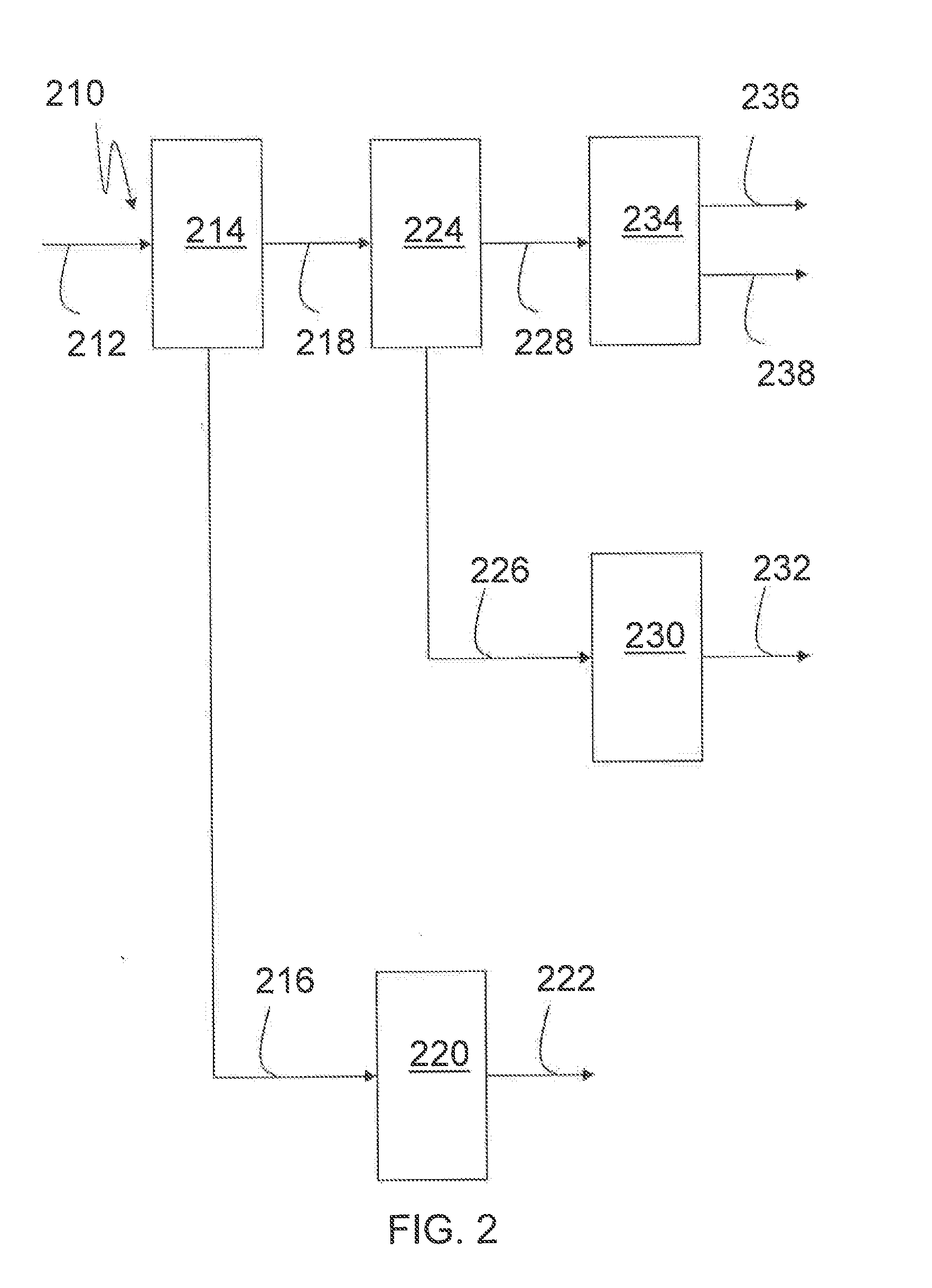Process, Plant, and Biofuel For Integrated Biofuel Production
a biofuel and process technology, applied in the chemical industry, liquid carbonaceous fuels, biochemistry apparatus, etc., can solve the problems of limited amount of biodiesel, the process of segregating 6-carbon sugar and 5-carbon sugar, and the inability to disclose a sugar to biodiesel methods or apparatuses
- Summary
- Abstract
- Description
- Claims
- Application Information
AI Technical Summary
Benefits of technology
Problems solved by technology
Method used
Image
Examples
example 1
[0081]An integrated biogasoline and biodiesel plant produces 370 kilotons of ethanol and 180 kilotons of biodiesel material or oil, according to one embodiment. FIG. 2 as discussed, above shows the basic components of the integrated plant. Optionally, the integrated plant produces 350 kilotons of ethanol and 25 kilotons of methanol, such as with two hexose fermentors utilizing different organisms or pathways for production of the respective alcohols.
[0082]The integrated plant consumes 4.8 megatons of sugar cane in the crushing and milling resulting in 720 kilotons of hexose sugar juice and 4 megatons of bagasse. The sugar juice ferments into the produced product alcohols. The bagasse hydrolyzes to 800 kilotons of pentose sugar juice (based on 20% sugar content from hemicellulose) and 3.2 megatons of lignin and cellulose residue. The lignin and cellulose residue combusts to produce steam and electricity for use in the process or export to the electrical distribution grid. The pentose...
example 2
[0083]An integrated biogasoline and biodiesel plant of Example 1 further includes an esterification unit and produces 160 kilotons of biodiesel product (based on approximately 90% yield on triglyceride) and 20 kilotons of glycerin, according to one embodiment. FIG. 3 as discussed, above shows the basic components of the integrated plant with an esterification unit.
[0084]The esterification unit converts the biodiesel material and an alcohol to biodiesel product and glycerin. The biodiesel product includes fatty acid esters. Depending on the alcohol used different esters result, such as methyl esters from methanol, ethyl esters from ethanol, and / or propyl esters from propanol. Optionally, the alcohol comes from the hexose fermentor. In the alternative, the alcohol comes from off-site production.
PUM
 Login to View More
Login to View More Abstract
Description
Claims
Application Information
 Login to View More
Login to View More - R&D
- Intellectual Property
- Life Sciences
- Materials
- Tech Scout
- Unparalleled Data Quality
- Higher Quality Content
- 60% Fewer Hallucinations
Browse by: Latest US Patents, China's latest patents, Technical Efficacy Thesaurus, Application Domain, Technology Topic, Popular Technical Reports.
© 2025 PatSnap. All rights reserved.Legal|Privacy policy|Modern Slavery Act Transparency Statement|Sitemap|About US| Contact US: help@patsnap.com



